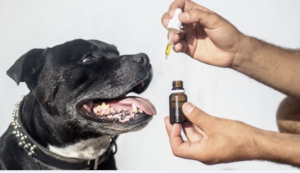A dog’s needs evolve as they get older. Fortunately, there are a handful of changes you can make in your home environment to ensure these needs are met.
Below we share the changes and concerns for older dogs, along with some of the most common ailments in older dogs. Furthermore, we will also walk through several therapeutic treatments that can serve as remedies.
What age is considered old for a dog?
A dog’s life can typically be sorted into 3 stages – young, adult, and senior. Dogs tend to encounter more health issues towards the third stage of their lives.
Interesting to note, however, is the fact that dogs age differently depending on their breed.
Larger breeds (above 45 kg), such as Great Danes and Bullmastiffs, tend to age faster – reaching seniority at the ripe age of 4.
Smaller breeds (below 10kg) on the other hand, such as Poodles and Yorkies, have longer life expectancies and don’t hit their senior strides until 9.
Dogs of all shapes and sizes can live many, many years, but the quality of their health will begin to dip off after reaching this point. What an owner does at this point is critical in ensuring that your dog lives comfortably and reaches life expectancy.
How can I make my old dog more comfortable?
There are a handful of things you can do to make your pet’s voyage into retirement more comfortable:
- Start incorporating hand signs to account for hearing loss.
- Talk louder but in the same tone.
- Be patient and try not to startle your pet.
- Be mindful of house temperature.
- Provide a comfortable dog bed wherever the family hangs out.
- Feed highly nutritious meals and easy to digest food and treats.
- Keep up with grooming.
- Clean ears, eyes, and mouth regularly.
- Keep your dog’s nails trimmed.
- Stay active and make time for stimulation.
How do I know if my senior dog has arthritis?
According to the Arthritis Foundation, 1 in 5 dogs have experienced arthritis as a form of chronic pain. The presence of joint pain in dogs is frequently associated with osteoarthritis.
Here are some of arthritis’ more obvious visual tells:
- Reluctance to walk, climb stairs, jump or play
- Limping/lameness
- Lagging behind on walks
- Pain or stiffness when getting up or down
- Yelping when touched
- A change in personality (aggression when normally good-natured)
- Licking of the affected joints

How can I help my old dog with arthritis?
Unfortunately, arthritis is a progressive disease and has no known cure. There are, however, a handful of treatments that can be applied in conjunction to provide relief for your pet.
Some of these treatments include:
- CBD oil
- Joint supplements.
- Non-Steroidal Anti-Inflammatory Drugs (NSAIDs).
- Physiotherapy
- Weight management
Speak with your vet to learn more about these pathways.
What does palliative care mean for dogs?
VCA Hospitals defines palliative care as ‘a philosophy of care in which a decision has been made to decline or withdraw the pursuit of curative therapy for a life-limiting illness.’
Pain management is the most important facet of palliative care in dogs. Pain is best managed from a multimodal perspective, which means using various techniques, both pharmacologic (medications) as well as non-pharmacologic, in conjunction to achieve the goal of maximum comfort.
The aim is to prevent and ease physical pain where feasible, and alleviate any emotional distress. As our pets age, they can experience a wide range of medical conditions that can impair their mobility and behaviours. Treating ailing pets with life-limiting conditions can result in complex medication regimes that can be exhausting for owners and pets.
Can CBD help dogs with joint pain?
Using CBD for palliative care can reduce the need for poly-pharmacy and enhance your pets’ quality of life and comfort as they decline or face life-threatening illnesses.
Witnessing your pet’s mobility and quality of life decline due to arthritis is a distressing experience. While conventional treatments can offer relief, novel cannabinoid therapies, specifically CBD oil, present potential for effectively alleviating pain, reducing inflammation and improving the quality of life of dogs with osteoarthritis.
CBD has been shown to reduce pain and increase activity in dogs with arthritis. The cannabinoid (CBD) in medical cannabis is considered an anti-inflammatory agent and may help chronic pain. Following research into using CBD for chronic pain in humans, its potential benefit for dogs with painful arthritic conditions is being considered.
How much CBD oil can I give my elderly dog?
When it comes to the dosing of CBD for dogs the best approach is to “start low and go slow.”
CBD is reported to have a biphasic dosing curve, which means that there is a sweet spot where the dosage is just right. If you go beyond that point, then the benefits can be lost.
Careful monitoring is required and, for more sensitive or fragile patients, it is generally advised that the dose only be raised in small increments. The dose may be accelerated in cases where your dog is experiencing a lot of pain or facing euthanasia, but this should always only be on the recommendation and guidance of a vet with experience in prescribing CBD.
We recommend checking in weekly with your vet to monitor progression as it can take up to two weeks for CB receptors to up-regulate and for your dog to benefit.
The vets in the CBD Vets Australia network understand the needs of your pet, so please get in touch with us today via [email protected] or call +61 2 8294 9303 to find out more.







